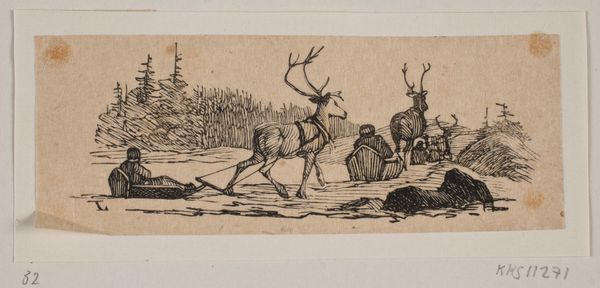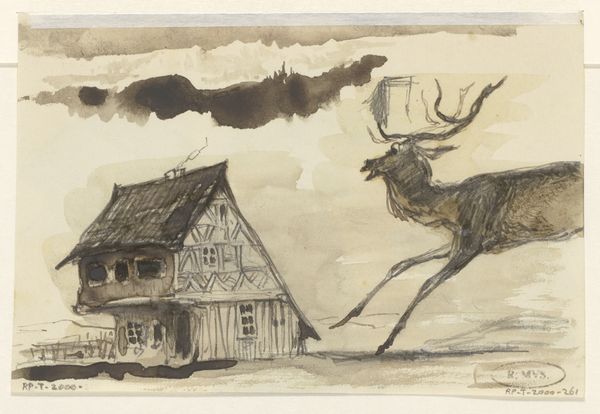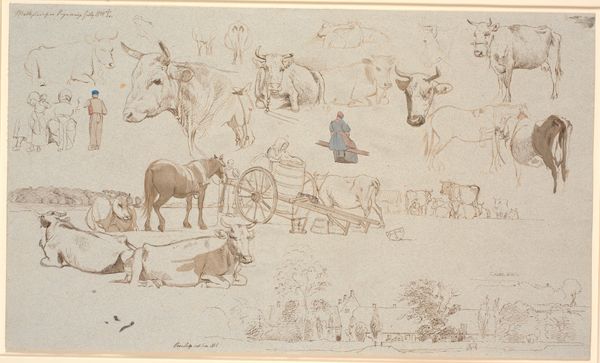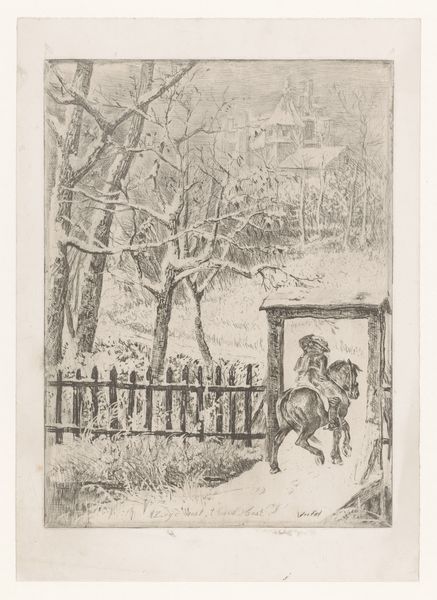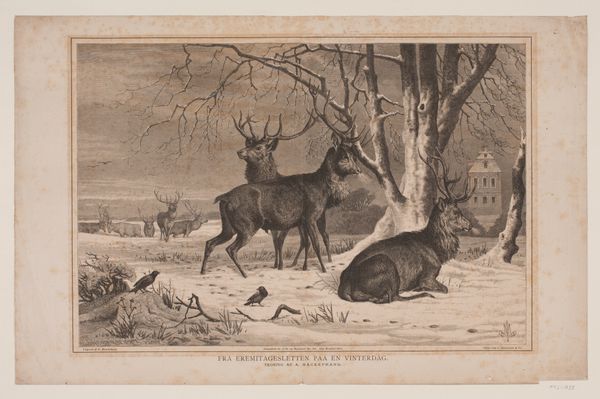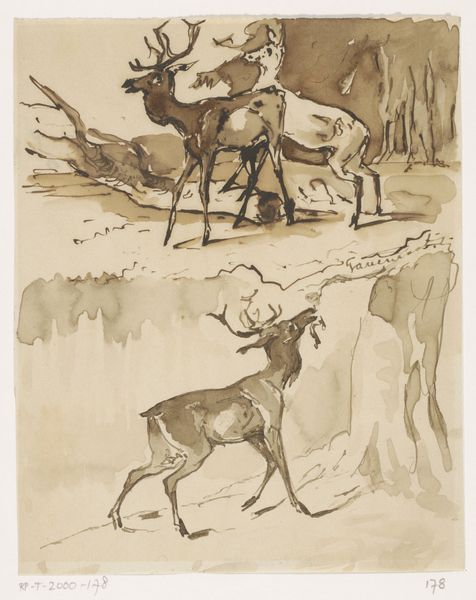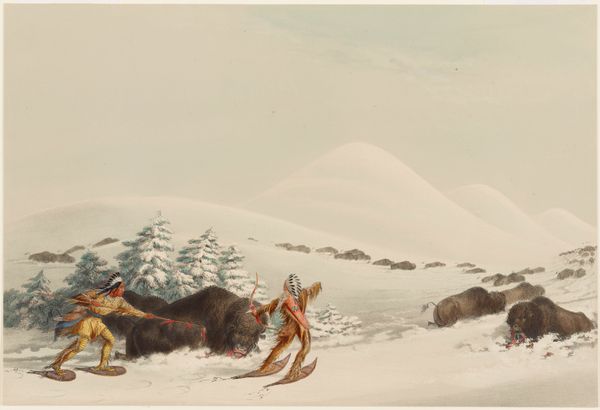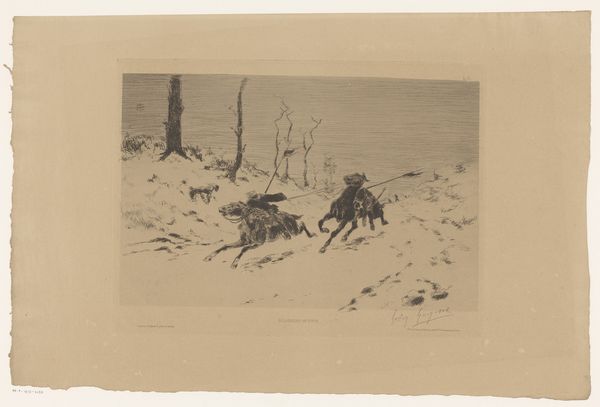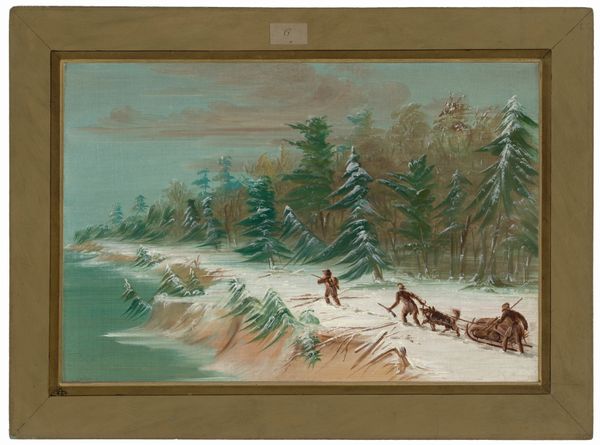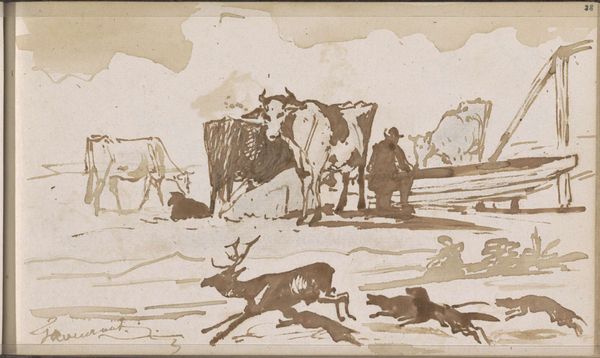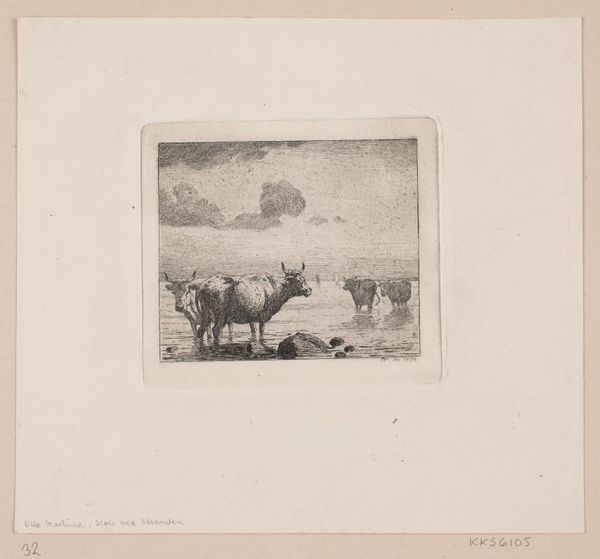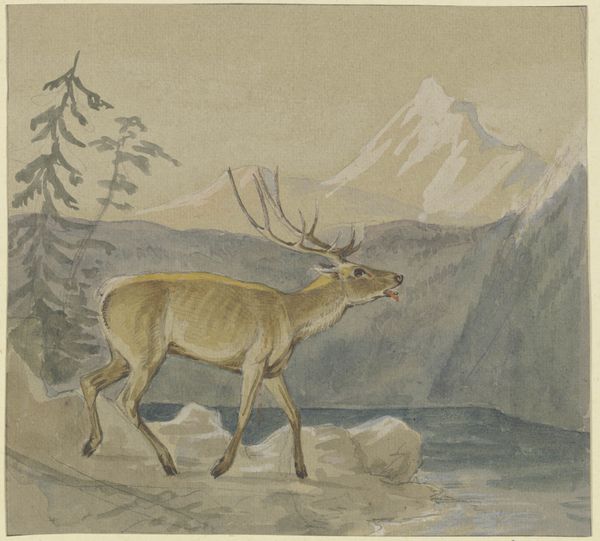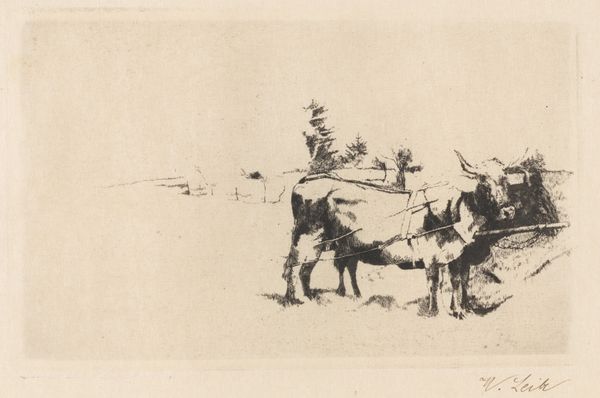
Studieblad fra malkepladsen ved Vognserup. Studier af køer. T.v. bondegård bag tre høje træer, i midten f.o. siddende malkepige med ryggen til samt en stående røgter. F.n. en røgtervogn 1844
0:00
0:00
drawing, ink
#
drawing
#
pen sketch
#
landscape
#
ink
#
genre-painting
#
realism
Dimensions: 321 mm (height) x 544 mm (width) (bladmaal)
Curator: Welcome. Before us, we have Johan Thomas Lundbye's "Study Sheet from the Milking Place at Vognserup," created in 1844 using ink on paper. Editor: What strikes me immediately is the stark simplicity. The limited palette accentuates the focus on labor, rendering the rural scene almost elemental. The ink, a primal pigment, embodies the earthly nature of farm life. Curator: Precisely. Lundbye’s realism, even in this sketch, is less about surface imitation and more about conveying the essence of rural Denmark. Note the placement of the figures – the milkmaid with her back turned, the herdsman standing tall. Editor: The materials, though simple, reveal so much about the economic reality of 19th-century agricultural life. Ink and paper were accessible, utilitarian. The means of production mirrored the everyday toil of farming itself. We can almost feel the artist, pressed to record fleeting observations in accessible materials. Curator: Yes, but also observe the composition. The studies are arranged with a deliberate asymmetry that enlivens the page. Each drawing is carefully positioned to guide the eye, creating a visual rhythm across the sheet. Semiotically, the individual studies together signify Lundbye's broader vision of Denmark's landscape and social structure. Editor: Structure is everywhere, but what are the structures that governed farm life? How would the work of milking cattle fall on the individual, or across a family, and how would this distribution shape how the farmer interacted with land and cattle? The sketch of the herdsman’s cart speaks volumes about transport, the routes of trade, and the physical burden shouldered. Curator: An insightful point. Consider the drawing as a structured visual argument about the beauty and value of the Danish countryside, elevating everyday scenes to a level worthy of artistic study, a microcosm representing the macrocosm of Danish national identity. Editor: I agree it elevates the value. Through a materialist lens, one could also interpret that value from how labor processes were literally translated onto a page with elemental materials in an era when art began to consider industry, peasantry, and more grounded social structures. Curator: It seems we each locate the value differently, but it seems both paths provide interesting insights. Editor: Yes, seeing through multiple lenses always gives one a clearer view.
Comments
No comments
Be the first to comment and join the conversation on the ultimate creative platform.
